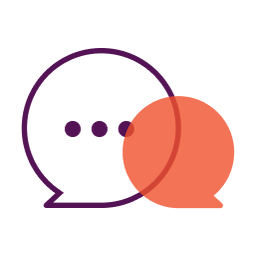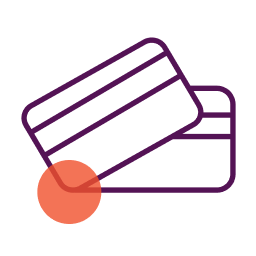Running a successful business isn’t just about bringing in more sales. Managing your business expenses is also key to profitability. Your business expenses likely include fixed and variable expenses, as well as expenses that are a mix of both types.
While managing all your business expenses well is important, here we’ll focus primarily on managing variable expenses, which may offer opportunities to save money quickly.
What Is a Variable Expense?
Variable expenses are related to sales volume. These costs may increase or decrease depending on production. This can be the case whether you run a service business or a business with physical products.
In addition, you probably have semi-variable or semi-fixed costs, which are a combination of both.
What Are Some Examples of Variable Expenses?
Examples of variable costs may include:
- Raw materials
- Production supplies
- Packaging
- Shipping costs
- Hourly wages or overtime
- Commissions
- Credit card fees
- Website hosting fees
- Email service provider fees
- Advertising
- Office supplies
- Direct labor
Some costs may be fixed or variable, depending on the business. Utility bills may be an example. A service-based business may have relatively predictable utility costs for heating or cooling the office, for example, while utility costs may be much more variable for a manufacturing business.
What Are Fixed Expenses?
Fixed expenses are just as they sound: fixed amounts that must be paid regardless of how much you produce or sell. Examples include rent, insurance premiums, loan payments, equipment leases, or property taxes. These expenses are often referred to as “overhead.”
That doesn’t mean fixed expenses can’t change. Costs can go up, or you may be able to negotiate a discount or find a cheaper option. But the cost generally remains the same regardless of whether production changes.
What Are Semi-Variable Expenses?
With semi-variable expenses there will be a fixed component you’ll pay for no matter what your level of production is, but increased or decreased production will change the cost. An example could be labor costs. Let’s say you have employees that earn base pay, but also can earn overtime or sales commissions. The base salary would be a fixed expense while the commissions or overtime would be variable expenses that vary with production level.
Another example would be an SaaS product that charges a base amount on a monthly basis but charges more when the number of users or usage exceeds a specific amount. Examples here could include business appointment software used by your salespeople, or website hosting or email hosting services.
Variable Expenses vs Fixed Expenses
As mentioned earlier, fixed expenses are costs that are not directly tied to sales. You’ll incur those types of expenses regardless of whether sales increase or decrease. Examples may include rent, salaries or other overhead expenses.
Just because a cost is fixed that doesn’t mean it can’t be negotiated or changed, but that usually takes time, or may be disruptive. Moving into a new space, or reducing headcount may reduce those fixed costs, for example, but may also have a big impact on the business.
That’s why business owners often try to address variable costs first.
What Is the Difference Between Variable Cost and Variable Expenses?
Business owners will often use the terms “costs” and “expenses” interchangeably. But technically they have different meanings.
Cost is used to describe the cost of acquiring an asset for the business, or the one-time cost of a business that is paid upfront.
An expense refers to money that’s paid on an ongoing basis to sustain business operations.
For example, you may pay an upfront cost to acquire a business vehicle and then have ongoing expenses, such as fuel, to maintain that vehicle.
How to Budget for Variable Expenses
Budgeting for variable expenses is more tricky than budgeting for fixed expenses, because they often change from month to month (or at other times). The first thing that’s helpful to do is to review your expenses to identify which ones are fixed expenses, semi-fixed expenses, or variable expenses.
Variable expenses may be categorized under operating costs or costs of goods (COGS) sold. Cost of goods sold tie directly to production volume. Operating expenses are not tied directly to production. Note that some operating costs are variable, while some are semi-fixed or fixed.
Can a company budget for variable expenses?
Absolutely. In fact it’s essential. You may not always accurately forecast variable expenses, especially at first, but over time you’ll be able to anticipate these costs with some degree of confidence.
One reason for tracking and reviewing your variable expenses is to calculate how they affect the break even point or profitability of those goods or services. At a minimum, you’ll need to know when you will break even on the sales of specific products or services. But by digging deeper, you may be able to identify whether you can increase profitability by reducing a variable expense. Or, you may discover that a specific product or service is not profitable, or not profitable enough to continue offering it.
Budgeting and forecasting will help you make those decisions, and to do that you need to track variable expenses and review your business financial statements on a regular basis. Doing so as part of a monthly budget review is often ideal, though some businesses may be able to get by with a quarterly or even semi-annual review.
Feeling overwhelmed? Turning to accounting resources or a professional service can help you review your financial statements to identify opportunities to improve your business finances. Time spent on business financial planning is well worth it in the long run.
The Variable Expense Ratio
The variable expense ratio (VER) is a financial calculation that measures how much a business’s costs change when it sells more or less stuff. It helps businesses see how flexible their spending is based on their sales.
You can calculate this number by using this calculation:
Variable expenses / total revenue = Variable expense ratio
A higher variable expense ratio means your business has more variable costs. This implies that as sales increase or decrease, these costs will follow suit. Monitoring your VER is crucial to understand the flexibility of your cost structure and make informed decisions about managing costs.
Variable Expense Per Unit Formula
It can also help to look at the variable expense per unit formula — a formula that helps figure out how much it costs, on average, to make or sell one unit of a product.
The variable expense per unit formula is calculated by dividing your business’s total variable expenses by the number of units produced or sold.
The formula is:
Total variable expenses / number of units = Variable expense per unit
Businesses use this formula to understand and analyze the average cost associated with producing or selling each unit of a product, which helps in pricing decisions, cost management, and overall financial planning.
Good Ways to Track Variable Expenses
There are a couple of key tools you’ll want to use to keep a handle on your business expenses.
First, you’ll want to make sure you use a business checking account. Some small businesses operate out of personal accounts, but you should move away from that as soon as possible. Business bank account statements will often be required when you apply for small business loans, for example, but even if you don’t it can make it easier to centralize your business finances.
If possible, set aside funds in a business savings account to cover variable expenses during times when cash flow is tight. A business line of credit can also be enormously helpful for managing unexpected fluctuations in variable expenses. Next, use business credit cards for business expenses when possible. This will allow you to better track and manage purchases, and may provide additional perks.
Finally, make sure you use accounting software and keep your bookkeeping up to date, whether you do it yourself or hire someone to do it for you. Your accounting software can allow you to tie your variable expenses to specific products or services, which can help you track COGS and deep dive into how they impact your bottom line.
Tips to Reduce Your Business Variable Expenses
As a business owner, you know your business better than anyone else. You will likely have a feel for which variable expenses can be reduced or eliminated, and which ones can’t. Still, it’s helpful to review them on a periodic basis to see when it may make sense to shop for a better deal or to cut the expense altogether.
Some of the things your business spends money on are discretionary expenses and it may be possible to tweak those without impacting productivity or sales. For example, if you like to provide fringe benefits to your employees, rather than buying items not everyone will appreciate or use, perhaps you can give them a monthly stipend they can use for meals, home office equipment etc. If done right this approach could save money and increase employee satisfaction.
Another option in this scenario could be to switch to a cash back business credit card with a higher rewards rate, then use the cash back you receive to fund employee perks. You’re not spending any more money, and you can still reward your employees. It can be a win-win.
Negotiating discounts with your suppliers or vendors is another way to reduce variable expenses. Some will provide a discount if you pay more quickly, and that can save money as well.
Your employees may be able to help you reduce these costs. Once a year, for example, you could ask employees to provide feedback on certain costs. You may identify software you’re not using, for example, or alternatives that are more cost effective. You may be able to incentivize employees to help you find these opportunities to cut costs.
Finally, building up your business credit scores can help you secure better terms with lenders and vendors and lower how much it costs to borrow.
Ultimately learning how to better manage your fixed and variable costs well can help you increase profitability and even to qualify for small business loans. Invest the time to review your expenses to find opportunities to save money and build a financially healthy company.
FAQS
This article was originally written on July 29, 2022 and updated on February 21, 2024.





Have at it! We'd love to hear from you and encourage a lively discussion among our users. Please help us keep our site clean and protect yourself. Refrain from posting overtly promotional content, and avoid disclosing personal information such as bank account or phone numbers.
Reviews Disclosure: The responses below are not provided or commissioned by the credit card, financing and service companies that appear on this site. Responses have not been reviewed, approved or otherwise endorsed by the credit card, financing and service companies and it is not their responsibility to ensure all posts and/or questions are answered.